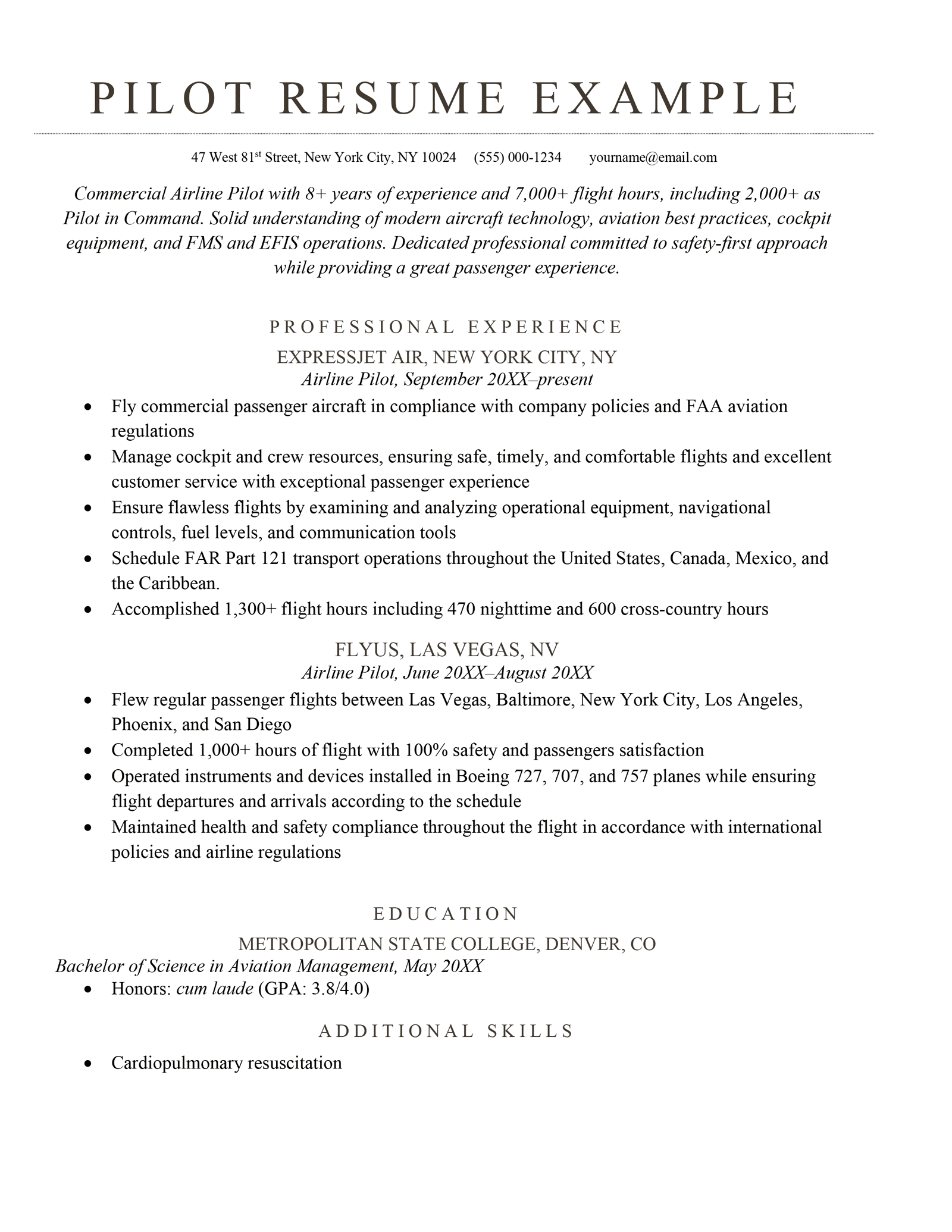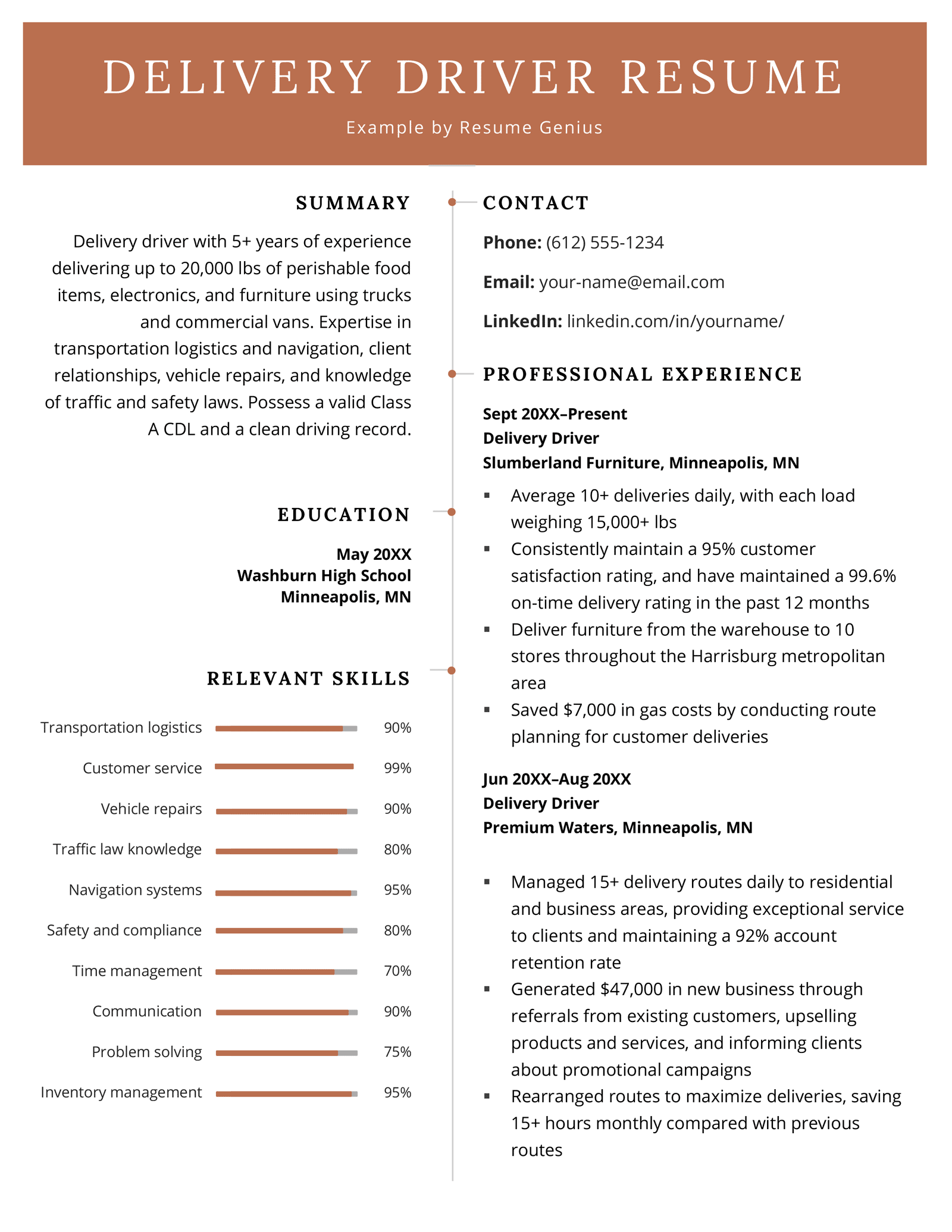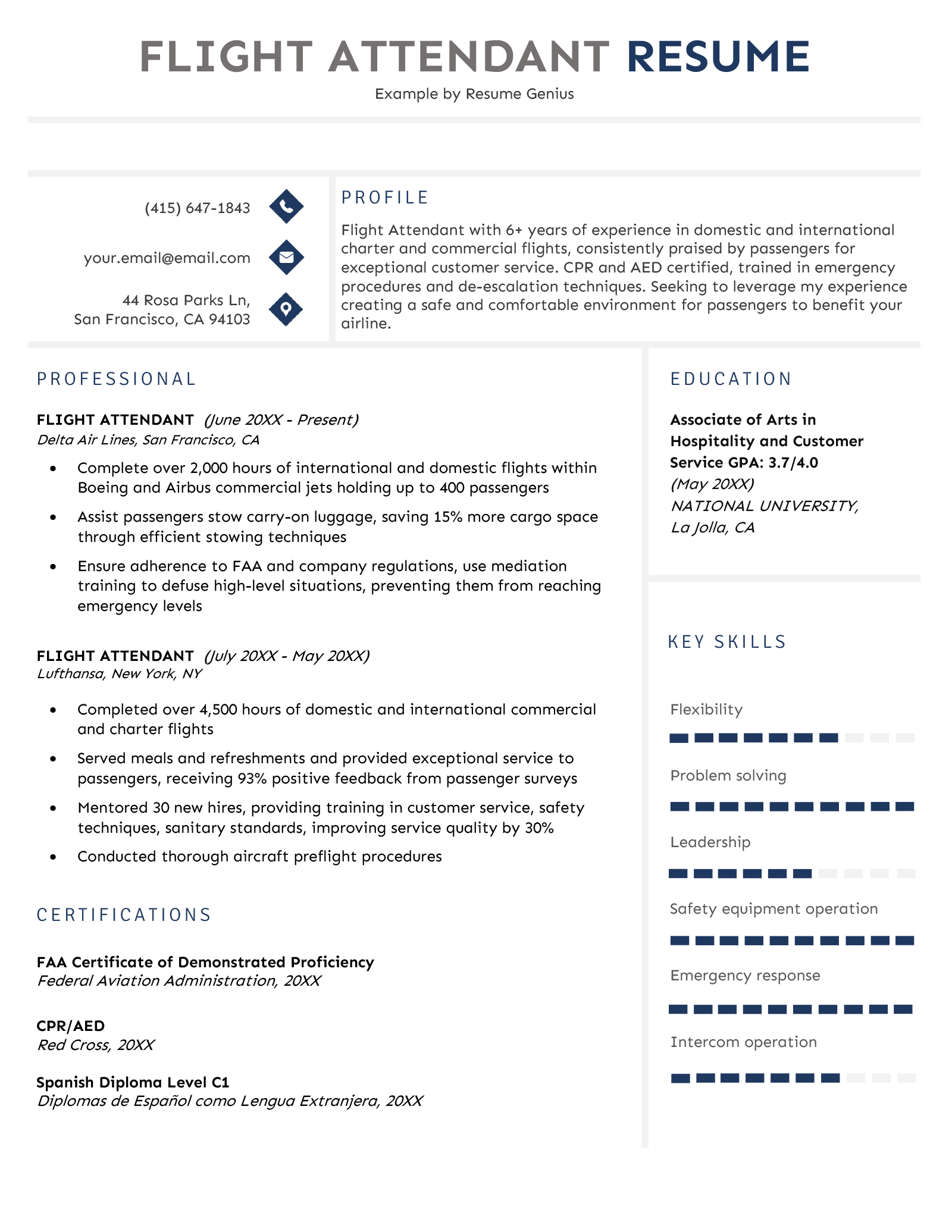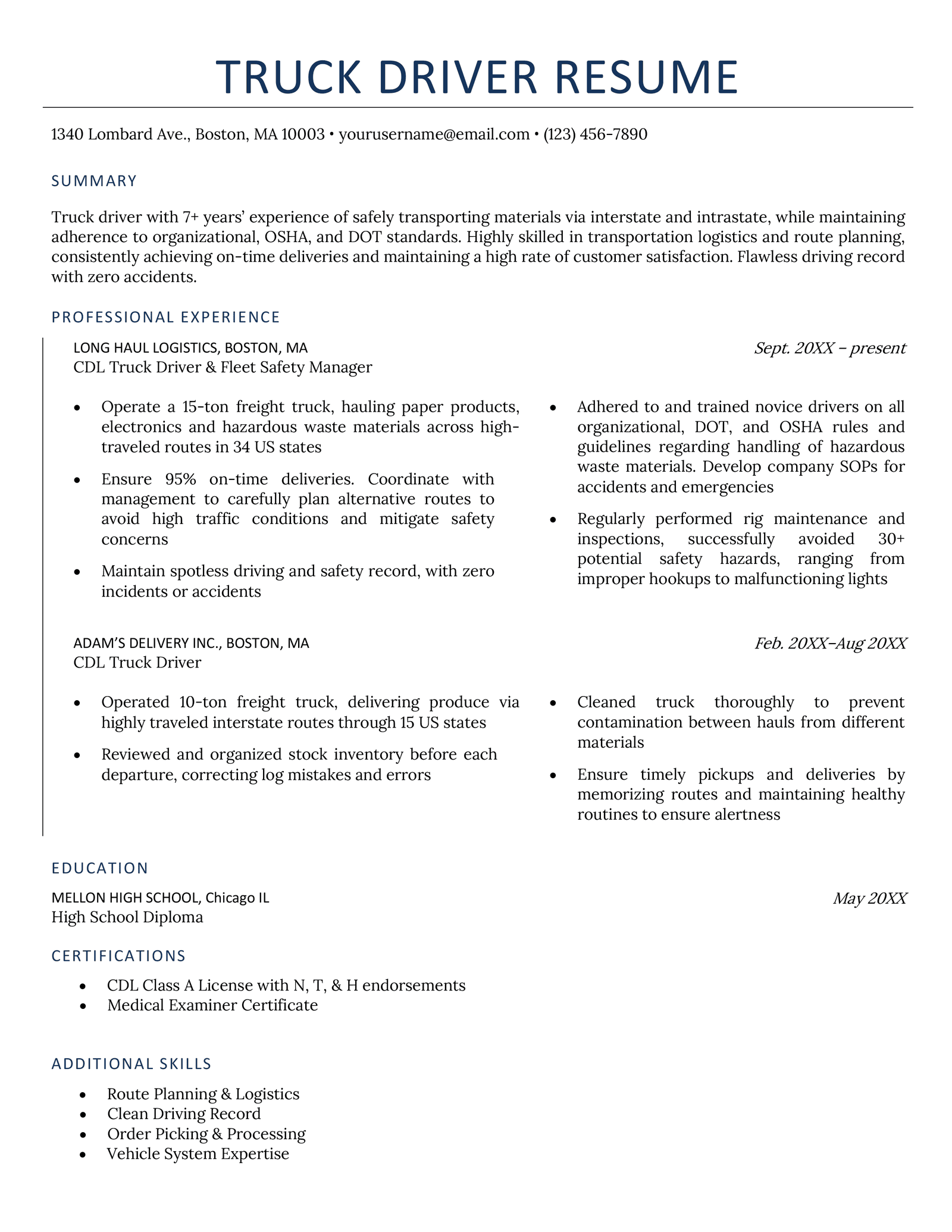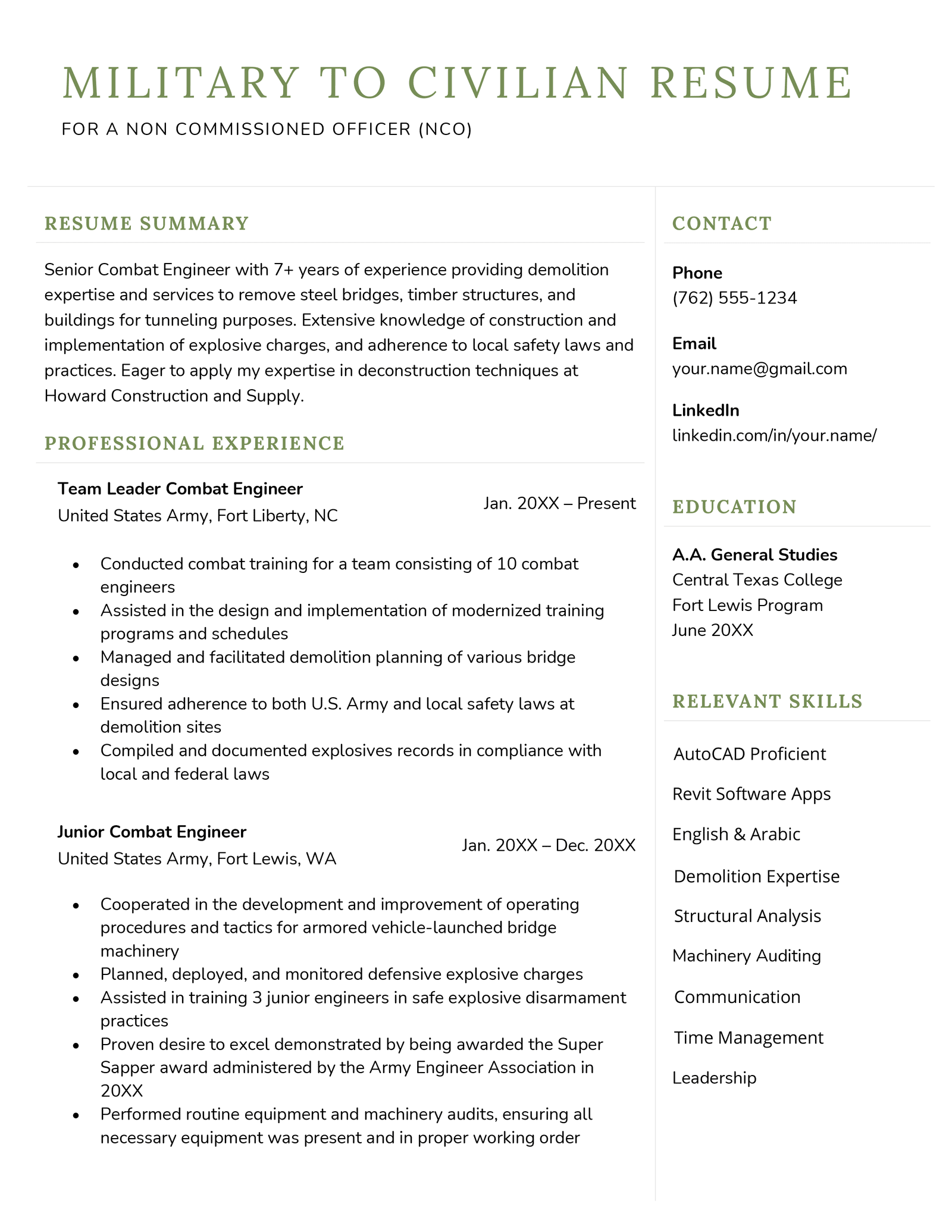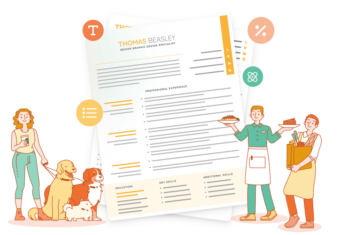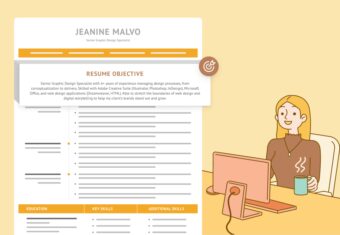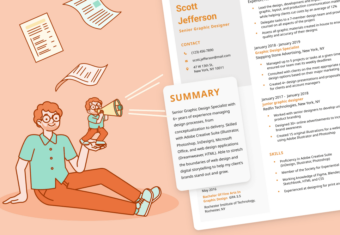Pilot Resume Template (Text Format)
FIRST AND LAST NAME
Email: your.email@email.com
Phone: (123) 456-7891
Address: Street, City, State
LinkedIn: linkedin.com/in/yourprofile
Resume Summary
Commercial Airline Pilot with 8+ years of experience and 7,000+ flight hours, including 2,000+ as Pilot in Command. Solid understanding of modern aircraft technology, aviation best practices, cockpit equipment, and FMS and EFIS operations. Dedicated professional committed to safety-first approach while providing a great passenger experience.
Work Experience
ExpressJet Air, New York City, NY
Airline Pilot, September 2015–present
- Fly commercial passenger aircraft between 47 destinations in compliance with company policies and FAA aviation regulations
- Manage cockpit and crew resources, ensuring safe, timely, and comfortable flights and excellent customer service with exceptional passenger experience
- Work effectively with crew members, airline personnel, and cabin crew with varying personalities and experience levels
- Ensure flawless flights by examining and analyzing operational equipment, navigational controls, fuel levels, and communication tools
- Schedule FAR Part 121 transport operations throughout the United States, Canada, Mexico, and the Caribbean.
- Accomplished 1,300+ flight hours including 400 nighttime and 600 cross-country hours
FlyUS, Las Vegas, NV
Commercial Airline Pilot, June 2011–September 2015
- Flew regular passenger flights between Las Vegas, Baltimore, New York City, Los Angeles, Phoenix, and San Diego
- Completed 1,000+ hours of flight with 100% safety and passengers satisfaction
- Operated instruments and devices installed in Boeing 727, 707, and 757 planes while ensuring flight departures and arrivals according to the schedule
- Experienced with FMS and EFIS systems
- Worked closely with the captain, prioritizing safety of the aircraft and delivering detailed planning for every flight such as weather forecasting and all other operational aspects
- Maintained health and safety compliance throughout the flight in accordance with international policies and airline regulations
Education
Metropolitan State College, Denver, CO
BS Aviation Management, May 2011
- Honors: cum laude (3.8/4.0)
Additional Skills
- Cardiopulmonary resuscitation


